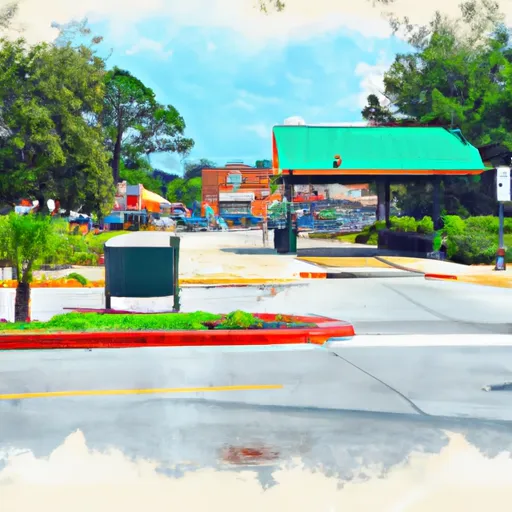-
 Snoflo Premium
Snoflo Premium
Get unlimited access to all our content
With no Ad interruptions! - Start Your Free Trial Login with existing account
Malone
Eden Index
Climate
7.6
•
Recreation
4.5
•
Community
0.7
•
Safeguard
4.8/10

Malone, Florida is a small town located in Jackson County, in the panhandle region of the state. The town experiences a humid subtropical climate, characterized by hot summers and mild winters. Summers are typically hot and humid with temperatures reaching the 90s°F (32°C), while winters are mild with temperatures averaging in the 50s°F (10-15°C).
The hydrology constituents of Malone are influenced by its location near the Chipola River and numerous lakes. This provides opportunities for various water-based activities, such as fishing, boating, and kayaking. The Chipola River is particularly known for its scenic beauty and is popular among nature enthusiasts.
Aside from water activities, Malone offers several outdoor recreation opportunities. The area is surrounded by lush forests and natural parks, providing great opportunities for hiking, camping, and wildlife observation. The nearby Apalachicola National Forest offers a wide range of recreational activities, including horseback riding, hunting, and birdwatching.
In summary, Malone, Florida experiences a humid subtropical climate, has hydrological features like the Chipola River, and offers outdoor recreation opportunities centered around water activities, hiking, and wildlife observation.
What is the Eden Index?
The Snoflo Eden Index serves as a comprehensive rating system for regions, evaluating their desirability through a holistic assessment of climate health, outdoor recreation opportunities, and natural disaster risk, acknowledging the profound impact of these factors on livability and well-being.
Climate Health Indicator (CHI): 7.6
Malone receives approximately
1396mm of rain per year,
with humidity levels near 88%
and air temperatures averaging around
20°C.
Malone has a plant hardyness factor of
8, meaning
plants and agriculture in this region tend to thrive here all year round.
By considering the ideal temperature range, reliable water supplies, clean air, and stable seasonal rain or snowpacks, the Climate Health Indicator (CHI) underscores the significance of a healthy climate as the foundation for quality living.
A healthy climate is paramount for ensuring a high quality of life and livability in a region, fostering both physical well-being and environmental harmony. This can be characterized by ideal temperatures, reliable access to water supplies, clean air, and consistent seasonal rain or snowpacks.
Weather Forecast
Streamflow Conditions
Apalachicola
Area Rivers
Apalachicola
Snowpack Depths
Apalachicola
Reservoir Storage Capacity
Apalachicola
Groundwater Levels
Recreational Opportunity Index (ROI): 4.5
The Recreational Opportunity Index (ROI) recognizes the value of outdoor recreational options, such as parks, hiking trails, camping sites, and fishing spots, while acknowledging that climate plays a pivotal role in ensuring the comfort and consistency of these experiences.
Access to outdoor recreational opportunities, encompassing activities such as parks, hiking, camping, and fishing, is crucial for overall well-being, and the climate plays a pivotal role in enabling and enhancing these experiences, ensuring that individuals can engage in nature-based activities comfortably and consistently.
Camping Areas
| Campground | Campsites | Reservations | Toilets | Showers | Elevation |
|---|---|---|---|---|---|
| Hardridge Creek | None | 215 ft | |||
| Cotton Landing | 10 | 14 ft | |||
| Cotton Hill | None | 214 ft | |||
| Dead Lakes State Rec Area | None | 23 ft | |||
| Wright Lake | 36 | 23 ft | |||
| Florida Caverns State Park | None | 144 ft | |||
| White Oak Creek | None | 237 ft | |||
| Hickory Landing | 20 | 14 ft | |||
| Houston County Center | 63 | 326 ft | |||
| Camel Lake | None | 83 ft |
Nearby Ski Areas
Catastrophe Safeguard Index (CSI):
The Catastrophe Safeguard Index (CSI) recognizes that natural disaster risk, encompassing floods, fires, hurricanes, and tornadoes, can drastically affect safety and the overall appeal of an area.
The level of natural disaster risk in a region significantly affects safety and the overall livability, with climate change amplifying these risks by potentially increasing the frequency and intensity of events like floods, fires, hurricanes, and tornadoes, thereby posing substantial challenges to community resilience and well-being.
Community Resilience Indicator (CRI): 0.7
The Community Resilience Indicator (CRI) recognizes that education, healthcare, and socioeconomics are crucial to the well-being of a region. The CRI acknowledges the profound impact of these elements on residents' overall quality of life. By evaluating educational resources, healthcare accessibility, and economic inclusivity, the index captures the essential aspects that contribute to a thriving community, fostering resident satisfaction, equity, and social cohesion.

